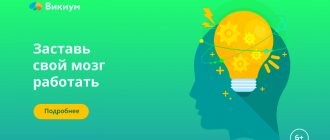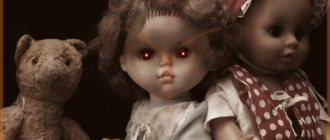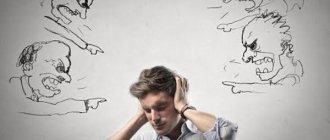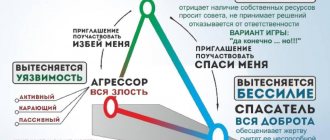Bibliotherapy is a psychotherapeutic method that uses literature as a form of correction of the patient’s mental state. This is treatment with the help of a book. The patient associates himself with the hero of the work and the situations in which he finds himself. All the hero’s feelings and experiences become the patient’s personal experiences. Thus, unresolved conflicts and problems are revealed, the patient gains awareness of their causes, and finds solutions.
Definition of the concept
The term “bibliotherapy” today means a science that studies the characteristics of an individual’s formation of stress resistance, the development of willpower, and the improvement of intellectual indicators.
In psychology, bibliotherapy is a method of correctional work in which the client is asked to identify himself with the hero of a literary work and analyze the character’s behavior in certain situations. The therapeutic effect is based on the client’s identification of the literary hero’s problems with his own difficulties.
Bibliotherapy has the basic characteristics of science: it has its own goals and objectives, terminology, and methods. At the moment, this technology of work is considered by scientists as an independent pedagogical movement, one of the variations of library science.
History of the method
Bibliotherapy as a method of psychological correction is based on human psychophysiology. Its homeland is Ancient Egypt. In Greece, in the ancient library, Pythagoras actively used bibliotherapy as the main method of working with his students.
Later in Europe, church scriptures found use in the work of healers. The list of literature used for medicinal purposes expanded with the advent of the Renaissance: works of art began to be used as a means of therapy.
However, only at the beginning of the 20th century did psychologists and psychophysiologists prove that an activity such as bibliotherapy is not just working with text, but an independent method of psychotherapy. The founder of the method in Russia is considered to be N. Rubakin, who in his scientific work “Among Books” wrote that with the help of correctly selected literary texts, the psycho-emotional state of people can be changed.
Bibliotherapy exercises were first tested in Kharkov in the department of psychoneurology by I.E. Velvovsky. The scientist relied on the recommendations of psychotherapist V.Ya. Wise, trying to create the most comfortable conditions for the participants during bibliotherapy sessions.
In 1916, the initial goals and objectives of bibliotherapy as a method of psychotherapy were defined. The innovative technique of working with the book aroused great interest not only among psychotherapists, but also among psychologists, teachers, and doctors. Bibliotherapy was used as an additional method during treatment in sanatoriums and boarding houses for the elderly.
In the post-war period, treatment with literary texts was organized in rehabilitation centers. A major contribution to the development of the method was made by Yu.N. Drescher, B.S. Kreidenko, R. Skaller, O.L. Kabachek, B.A. Simonov, I.N. Kazarinova.
Examples of application of the technique, results
Example #1
Tatyana is 28 years old. She suffered from dizziness and a mild form of neurosis. The therapy method is parallel reading of Akhmatova’s poetry and Turgenev’s prose, art history literature. I read the works independently and made notes.
The result is stabilization of the condition.
Example No. 2
Lydia is 35 years old. The method of contrasting reading of fairy tales and classics, science fiction and archaeological literature was used. Readings of favorite works by Pushkin and Jack London were also used. I was engaged in parallel reading of two works, one of which required deep work, and the second was easy to understand.
The result is improved relationships with others, overcoming passivity, realization with the help of additional incentives, and increased motivation.
Example No. 3
Alexander 30 years old. Diagnosis: chronic depression. The patient also experienced a number of tragic events, which worsened his condition.
I turned to Yesenin’s poetry, which led to a rethinking of my own life, finding reasons, mistakes and failures. There was an awakening of creative abilities.
Kinds
Common types of bibliotherapy are:
- Purposeful psychocorrectional work with a book. This type involves the direct participation of a psychologist in the therapeutic process, who diagnoses the client’s problem, recommends certain texts, and explains techniques for working with them.
- Reading fiction without setting psychocorrectional tasks. This type is practiced by people who love to read. They select fiction according to their preferences. Reading books improves their mood and has a positive effect on cognitive processes.
Problems of older people with memory impairment
Old age itself is a big stress factor. Additional stress is the person’s awareness that the mind, which has served faithfully all his life, begins to change. It could be:
- impaired memory for events that occurred recently, taking into account the preservation of reproduction of ancient events;
- attention disorders - lack of concentration, distractibility;
- slowing down the pace of thought processes;
- emotional disturbances;
- decreased ability to chronology events and navigate in space;
- loss of ability to think logically;
— from the point of view of motor skills, this is a violation of tempo, smoothness, and coordination.
Observing such changes leads to withdrawal, depression and denial. This reaction only worsens over time and leads a person to social loneliness. Without outside help it is difficult to return to a normal existence.
Focusing on negative changes in the body fixates on yourself and your problems. Therefore, we should not forget that there are advantages to old age. Positive social characteristics of the older generation include:
- life wisdom - the ability to apply life experience, give reasonable advice in problem situations;
— willingness to share knowledge and skills;
- the desire to replace lost professional and family roles with social activity.
It is important to see not only problems, but focus on the positive aspects of life. To solve problems, it is better to turn to professionals.
Methods
The main methods of bibliotherapy are:
- Corrective method. It does not involve solving problems of mental correction. Its main goal is a positive transformation of the client’s difficult life situation by expanding the range of individual behavioral stereotypes. To achieve the corrective goal, entertaining texts are used. The method is suitable for correcting personal anxiety and increasing an individual’s self-esteem.
- Psychocorrection method. This method is aimed at transforming the painful mental state of the individual. The psychologist helps the client learn to control emotions and manage their mood. The result of the application of the psychocorrectional method is the formation in the client of the ability to openly express feelings and correctly understand the emotions of other people.
How does this happen
There are two main forms of bibliotherapy:
1) the client simply reads the text that was handed to him in the library. The specialist librarian suggested in which books the hero had the same problems as the reader, handed him a stack and was off;
2) the more modern, interactive form is based more on the interaction between the reader and the therapist. First, the work is read aloud and then discussed.
Perhaps sometimes it’s like analyzing an instructive story in elementary school: “Why did Vanya say that he didn’t eat plums? How did he feel? Has this ever happened to you? What would you do?”
The second method is common in Western countries, where they trust specialists more, practice self-medication less often, and in addition, there is a tradition of discussion book clubs. However, in this interactive approach one feels a certain distrust of the reader himself: not only will he not notice the psychological characteristics of the key characters, but he may even skip the dramatic moment altogether.
The first option looks more attractive not only because it is more accessible: you don’t need anything other than a book. The fact is that our perception of the text is unique. Each of us will take something different from the same paragraph. N.A. Rubakin in his book “What is Bibliological Psychology” (1924) illustrates this with a funny story. A certain missionary Dobritzhofer tried to explain to the African aborigines the meaning of the word “conscience.” In the native language of the local residents, the missionary spent a long time making lofty speeches about the ethical code, remorse and mental pain during times of discord with oneself. In the end, it turned out that the Africans found the lecture very useful, thinking that they were being told about indigestion.
While reading, each of us is an aborigine and is free to use the text exclusively for our own personal purposes. The point of therapy is precisely this—to isolate the actual, the painful. A book read at 15 and at 40 is perceived as two different works, but in fact it is we who have changed, and the book has only become a little frayed around the edges since then.
That is, the content and all the meanings of the book depend to a greater extent not on the writer, but on the reader.
If the reader does not understand anything, then the book has zero effectiveness, zero value. And even typographic lines are not the content itself, but, in Rubakin’s words, “the stimulants of the content.” A wonderful mirage - the world of a book - is what we build in our heads, based on our experience, feelings, mental characteristics, and only with some participation of the author. If poetry is recited to us by a book therapy specialist, an intermediary intervenes in the process and everything becomes more complicated. But there is an opportunity to speak out loud your emotions.
Techniques and exercises
I will reveal the directions of bibliotherapy. Common bibliotherapy techniques are:
- Reading literary texts aloud. This technique is implemented in a group. The facilitator reads a passage from the text and then organizes a group discussion of this passage. If a play is chosen to achieve the goals of psychocorrection, then its reading is organized by roles. Each of the participants in the group independently draws parallels between the artistic word and their own problems.
- Identifying oneself with the hero of a work of art. Psychologists use this technique as homework. The client is asked to choose a literary character that he resembles. At the next meeting, the psychologist and the client discuss the choice of a literary character and analyze his actions described in the book. This technique improves an individual’s social perception and creates new behavior patterns in him.
- Retelling a book or story you have read. This technique is also used in group work. The presenter reads out a particular work of art and asks the participants to retell it from the perspective of different characters in the story. This technique helps a person learn to analyze a situation from different positions.
- Independent reading of the work by the client at home, and then discussion of what was read with a psychologist. This technique is used in individual work with a client. At each meeting, the psychologist recommends that the client read one or another text. The client writes down his thoughts and emotions that arise during the reading process in a reading diary. These notes will be the starting points for discussing the piece at the next meeting.
- Own composition of literary texts. This technique is aimed at the client searching for different options for responding to certain life events. The beginning of the story is voiced by the presenter, and then the participants offer various options for the development of events.
- Preparation of illustrations for literary text. The psychologist uses this technique when there is a need for in-depth diagnosis of the patient’s problem.
- Acting out a situation from the book. This technique helps participants try on the role of a particular literary character. Such actions teach clients to pay attention to a person’s posture, facial expressions, and gestures, and to predict the emotional reactions of a communication partner.
The psychologist chooses exercises within each of the listed techniques, types and methods of work depending on the goals of psychocorrection and the age of the client.
Reading for mental strength
Nelly Voskoboynik: Now I have a novel coming out in short stories, “You Will Laugh,” in which I collected short sketches from the life of our oncology department. Almost all of my texts went through LiveJournal and received comments. Stories set in the hospital, especially those in which the patients show eccentricity, courage, and dignity, get three times as many readers as Jane Austen-type stories or my favorite fairy tales and essays.
Personally, when troubles, anxieties and sorrows come, I read Thornton Wilder’s book “Theophilus North”. This book, translated by Golyshev, with its simple construction of sentences and even, noble rhythm, calms and consoles me. And the main character works small miracles. He is very shy about this ability and would be glad to give it up, but when someone nearby is in great pain, he involuntarily and incomprehensibly for himself and others stops the suffering of others.
Every person needs a book like this. Painkiller for the spirit.
Stages and algorithm
The algorithm for conducting bibliotherapy includes several stages:
- The stage of motivating participants to the lesson. At this stage, the facilitator establishes contact with the participants, sets the goals and objectives of the session, and introduces the participants to the rules of group work.
- Stage of cognition in bibliotherapy. At this stage, direct work with the literary text takes place.
- Discussion stage. At this stage, the presenter organizes a discussion of the work of art.
- Reflection stage. The final part of the session is needed to sum up the results, receive feedback from the participants, and evaluate the effectiveness of psychocorrection.
What to read
You can always refer to a ready-made list. British bibliotherapists Ella Berthoud and Susan Elderkin in the literary and psychological reference book “Book as Medicine” offer recipes for all occasions. There are stories here that are recommended not only for the blues, but also for self-doubt, thirst for revenge, sleepwalking, and even a broken leg... If the book cures mental pain, why shouldn’t it be useful for physical pain as well?
If you're stuck in adultery, therapists prescribe Madame Bovary and Anna Karenina. When you have a personal crisis, embrace Kafka. “The Old Man and the Sea” will help you cope with anger, and “Blindness” by Saramago will help you cope with the fear of responsibility.
If you are not tall enough, re-read “The Hobbit”, sad thoughts are tormenting you - take up “Robinson Crusoe”. There is Dostoevsky, Murakami, Updike, Pratchett, and it seems they are just waiting to help cope with life.
Principles of literature selection
The psychologist needs to pay great attention to the selection of literary works for conducting bibliotherapy sessions, since this method forces the client to “appropriate” the feelings, thoughts and actions of the lyrical hero. Therefore, the hero must be positive and have a high level of morality. The selection of literature for psychocorrection is determined by the following principles:
- Taking into account the age and individual characteristics of the client. The use of bibliotherapy allows working with different age groups: with preschoolers, teenagers, students, adults and the elderly. Books must correspond to the psychological characteristics of age.
- Accessibility and understandability of the writer’s literary language. If the literary text is incomprehensible to the reader, interest in it will quickly disappear. It is impossible to achieve psychocorrectional goals using bibliotherapy if the client has no interest in the session.
- Correlating the genre specifics of the book with the client’s psychological problem. Different literary genres have different effects on people.
- The contrast of good and evil in a work of art. This principle is important when selecting literature for children's bibliotherapy sessions.
Five life-affirming books about terrible illnesses and death. List of Ekaterina Aksenova
Humanity is rethinking disease and death. People are living longer, many diseases have been defeated, but we know more and more about the ailments that remain with us, because patients now have the opportunity to talk about their experiences on social networks and blogs. Death and illness have moved from homes to hospitals - fewer and fewer people are dying a “good death”, having reached the physical limit of aging, surrounded by sobbing children and relatives, still managing to give valuable parting words from their bedsides; more and more - in hospitals, often without any control over their fate.
Richard Shepherd. Unnatural reasons. Notes from a medical examiner: high-profile murders, horrific terrorist attacks and complicated cases
A fresh book by a leading British forensic expert, which was published in Russia literally six months after the world premiere. Dr. Shepherd performed more than 20,000 autopsies and learned a thing or two about death and life. The book is not the easiest, because the author talks about how often babies die due to the carelessness of adults, how easily human life is interrupted, how difficult it is for everyone in the world. The doctor himself built a brilliant career, but suffered incredible professional burnout and faced a family crisis - reading about this is no less interesting than about death.
Caitlin Doughty. When smoke obscures your eyes: provocative stories about your favorite job from a crematorium employee
An invigorating work by a very young girl who wants to revolutionize the funeral industry in the United States, where funerals have become an activity for soulless bloodsuckers who are ready to lie to relatives and extort colossal sums from them for a ceremony that brings no light or comfort to anyone. The book has a sequel, not yet translated into Russian: the author travels around the world to understand other funeral traditions - from tree graves, from where the dead are taken out once a year to talk and take photos together, to ultra-technological temples of memory in Japan.
Atul Gawande. We are all mortal. What is dear to us at the very end and how can medicine help here?
The epoch-making work of a wise doctor who managed to look beyond the line between life and death, pull many people out of there, and guide even more. Gawande shows that you need to live right now, and when the time comes, try to die a “good death”, and not surrounded by a medical team.
Rebecca Skloot. The Immortal Life of Henrietta Lacks
If you negotiate with the devil about immortality, be careful. It may turn out like Henrietta Lacks, whose cells are multiplied for many decades after her death in laboratories around the world for research on viruses, drugs, radiation, etc. The book is incredible - a mixture of discourse on bioethics, a family saga and a social pamphlet.
David Quammen. Infection. How animal-borne infections could lead to a deadly global epidemic
A popular work on how new infections arise that can infect millions of people (SARS, swine and bird flu). Almost all dangerous infections occur when a virus common in wild animals suddenly mutates so that it becomes infectious to humans. Because of this, humanity was faced with the Spanish flu, syphilis, smallpox and HIV.
Read us on Facebook, Twitter, Instagram, Telegram (@tandp_ru) and Yandex.Zen.
Where can you study on the topic #psychology
Well
Master's in Counseling Psychology
September 1, 2021 – July 1, 2021
Well
“Childhood Psychology” - retraining program in child psychology and psychotherapy
October 6, 2021 – July 31, 2020
Well
Specifics of using bibliotherapy at different age stages
At different age stages, the specifics of using bibliotherapy will differ.
Working with children
Preschool teachers use bibliotherapy to solve the problems of developing morality in children. This problem is solved through fairy tales. Bibliotherapy in working with preschoolers allows you to solve problems such as:
- nurturing the child’s emotional responsiveness;
- formation of a socially approved type of behavior;
- creating conditions for the child’s creative self-expression;
- speech development;
- development of mental processes.
For school-age children, bibliotherapy is a method that helps cope with intrapersonal contradictions. Working with a literary text, a teenager finds answers to questions and understands the cause-and-effect relationships of events in his life.
Working with older people
If bibliotherapy is used for the rehabilitation of older people, then preference should be given to philosophical collections, parables, and poetry. Such texts help a person accept himself as he is, because they are built on universal human values. During bibliotherapy sessions, pensioners rethink their life path.
Write to survive
Not only reading, but also creating stories can help a person get out of a psychological hole.
Ekaterina Aksenova: Now an amazing situation has developed in the world of literature: millions of people have the opportunity to easily write and publish their own book, so everyone who has had some unique life experience can publish their own, separate work about it and find their reader. You can think of bestsellers written by travelers, small business owners, former members of exotic cults, drug addicts, enlightened people and astronauts. Perhaps the most interesting personal experiences are those who are very close to the final line: standing on the threshold of death, seeing something over the horizon and may have time to convey something important.
One of the first super-bestsellers of the “one foot in the grave” genre was the uplifting “The Last Lecture” by Randy Pausch: the cheerful IT specialist showed how to dream and say goodbye to hopes.
Young neurosurgeon Paul Kalanithi, with his “When Breath Becomes Air,” tells how life changes when you know your deadline.
Terry Pratchett, while Alzheimer's was killing his brain, prepared a collection of essays for publication, the most interesting of which are the later texts, where he manages to reflect on what is happening before the disease finally defeats him.
Music therapy
Music therapy
is a technology of sociocultural rehabilitation that uses diverse musical means for psychological, pedagogical and therapeutic correction, development of creative abilities, and activation of social adaptive abilities.
When listening to a piece of music, tension goes away and many negative feelings are relieved.
The main criteria for selecting musical works:
- calm pace;
- absence of dissonances and tense climaxes in the development of the musical theme;
- melody and harmony.
For rehabilitation purposes, music of different genres is used, which sometimes acts not only as an independent means, but also as a complementary element to other creativity - modeling, drawing, theater. Music often matches an existing mood or can change it in a positive way.
Physical activity to music regulates nervous activity, enhances metabolism in the body, increases overall tone, improves the functioning of the cardiovascular system, and develops physical abilities. Therefore, musical education is considered as an important factor in the social adaptation of people with memory impairments.
Singing enriches people with new impressions, develops initiative, independence and at the same time corrects the activity of mental processes. Listening to music and singing require mental, physical and mental stress.
Features of social adaptation of people with memory impairments
Cultural and leisure activities play an important role in the socialization of people with age-related memory impairment. It provides an opportunity to return to society and, through various types of active leisure, to activate the mind and train memory. It can be:
— classes in artistic, applied, technical creativity;
— leisure holidays, competitions;
— excursions, games;
- business, commercial, logical, intellectual games and activities;
- quiet passive rest - reading, watching TV, listening to the radio, solving crosswords.
It is important to be able to choose and offer a person an activity that will not allow him to focus on painful sensations and experiences. Often this is applied artistic and technical creativity or a passive activity - reading, watching TV, listening to the radio. Thanks to this, older people feel better and their painful condition is alleviated.
Rehabilitation and social adaptation of older people with memory impairment depend on the participation of specialists. These are doctors, psychologists, teachers, defectologists, social educators, specialists in culture and rehabilitation of the disabled. For some reason, people who feel their memory is beginning to fail them rarely turn to doctors about this.
Let's take a closer look at different types of rehabilitation leisure activities.
Play therapy
Game therapy
is a complex of rehabilitation game techniques and a means for liberating pathological mental states of a person.
This technology performs the functions of socialization, development, education, adaptation, relaxation and recreation. At the same time, traumatic life circumstances are experienced in a conditional, weakened form.
Types of directed play therapy include:
— educational and educational games;
— board and computer games;
— contests, tournaments, competitions;
- outdoor games.
Any game can be adapted for the elderly by facilitating the playing conditions, reducing the number of participants or the duration of the game.
In games, a person can freely express himself, free himself from the stress and frustration of everyday life, try himself in a specific social role, establish communication and master social skills.
Isotherapy
Art therapy or isotherapy
is a rehabilitation technology based on the use of art and used by psychologists, speech pathologists, animators and teachers for the rehabilitation and socialization of people.
Artistic creativity therapy helps eliminate or reduce neuropsychic disorders, restore and develop impaired functions and skills, and develop abilities for gaming, educational, and work activities in the process of creative activities.
A person expresses his inner state, sensations and experiences through drawing. Being directly related to the most important mental functions - visual perception, motor coordination, speech, thinking - drawing develops each function and connects them with each other, helping a person organize the acquired knowledge, formalize and record his ideas about the world around him.
Drawing solves psychological and personal problems - fears, anxieties, uncertainty, loneliness, overcomes negative experiences, builds hand confidence and precision of movements. For example, by the tonal and color scheme, rhythm and composition of the drawing, by the choice of characters and plot, psychologists judge the presence of problems in a person’s psyche and worldview.
Isotherapy classes harmoniously develop a person’s mental functions. Classes are varied in subject matter, form, methods of influence, and materials used. To master the material and develop skills in the process of sociocultural rehabilitation, complex techniques are used: drawing in combination with speech, music, and light.
The more creativity and creativity a person has, the longer his mind will not lose its freshness.










